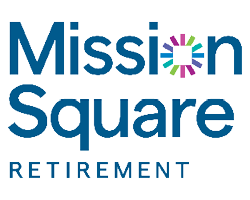Public meetings are meant to be where communities and governments conduct business, learn about important issues, and make crucial decisions about courses of action. However, public servants and elected officials can frequently encounter tense interactions that quickly escalate and become polarizing, leading to problematic exchanges that range from name-calling, finger-pointing, and yelling to even physical threats. At the same time, residents face intimidating formats, limited interactions and a lack of follow-up; they frequently hear that officials are only listening to the “usual suspects,” and public comments come too late to matter.
Meetings are thus often adversarial and involve mistrust, with no one actually being heard and feeling respected.
Yet across the country, some cities prove that better public meetings are possible. From rethinking room layouts to incorporating deliberation, from pre-meeting engagement to closing feedback loops, governments are finding practical, legally permissible ways to foster civility and collaboration.
Drawing on research the Center for Democracy Innovation has conducted in conjunction with real-world innovation, such as Boulder’s Community and Council Forum, Mesa’s youth-led processes, this guide outlines eight steps to de-escalate public meetings and rebuild trust.
1. Understand What’s Causing Escalation in the First Place
Escalation isn’t simply coming from ‘difficult people’, but often stems from complex structures that aren’t attuned to the needs of the current political and civic climate. The standard public meeting is decades old and was designed in a different political era, with needs more focused on transparency than on two-way dialogue.
The design of current meetings is intimidating to new and unfamiliar attendees, often unresponsive to public input, and performative, with residents speaking to a crowd rather than to an issue. Residents say they are “talking to straight faces who aren’t responsive” and that public comment “happens at the wrong moment” in the process when “it’s too late” for meaningful input. For officials, the dynamic can feel like being yelled at with no opportunity to engage in dialogue. For both sides, the structure encourages conflict, not collaboration.
Recognizing that design, not simply people, is the problem unlocks the ability to make targeted changes.
2. Start With What the Law Actually Allows
Many communities believe sunshine laws prevent innovation. Meanwhile, public servants and officials operate as if the Robert’s Rules of Order and the existing agenda format are how things have to proceed, because this is how it’s always been done. But the legalese of Sunshine Laws, Municipal Codes and Charters show the opposite in many, many cases: most open meeting laws are broad, not prescriptive, and leave significant room for redesigned formats as long as transparency and opportunities to speak are preserved. In fact, so long as a ‘meaningful opportunity’ to participate is given, there are few prescriptions other than legally required meetings to host traditional public comment periods during public hearings, say, zoning issues.
This means governments can: use small groups, change room layouts, allow asynchronous input, introduce learning components, facilitate dialogue before or during meetings, and invite randomly selected participants.
De-escalation begins with legal literacy, knowing what is possible so you don’t default to the most rigid interpretation.
3. Set the Stage: Redesign the Physical and Social Environment
Space shapes behavior. A dais elevates officials and cues opposition. Rows of chairs reinforce spectatorship. By contrast, round tables, small groups, and shared spaces reduce hierarchy and tension. Our work on Better Public Meetings uses layouts that promote dialogue, not confrontation, put officials and residents side-by-side during discussions, and bring meetings into neighbourhoods (rotating spaces) to lower intimidation and increase access.
For example, in Boulder’s first-of-its-kind Study Session, the official meeting moved from a dais to roundtables. This was one of the most powerful de-escalation tools: it “dismantled physical hierarchies” and led to “more nuanced conversations”
4. Shift from a Performance Model to a Learning + Dialogue Model
Most escalations occur when people arrive at meetings with fixed positions and high emotions, then have only a couple/few minutes to speak. But what if we prepared participants with shared information and structured learning?
Effective de-escalation includes providing balanced background presentations before discussion, introducing multiple perspectives to broaden understanding, using facilitators to guide conversation and uphold ground rules, and ensuring everyone (including officials) participates in the same learning process.
When residents move from reacting to learning, discussions become less adversarial and more curious.
5. Redesign Public Comment to Reduce Polarization
Traditional public comment creates a contest of volume, with whoever shows up and speaks the loudest or the longest dominating the ‘discussion’. By contrast, some alternatives that de-escalate without restricting speech include:
- Structure comments around questions (“What impacts should we consider?”) rather than positions.
- Randomly select speakers if the list is long, to avoid repetitive or stacked comments.
- Give equal time to pro and con viewpoints.
- Highlight a range of community perspectives, so a few loud voices don’t define the narrative.
- Allow asynchronous submissions (audio, video, written), reducing pressure and improving accessibility.
These adjustments reduce grandstanding, broaden representation, and shift the tone from combat to contribution.
6. Use Small-Group Deliberation to Build Civility and Shared Ownership
Small groups are one of the most powerful de-escalation tools. They work because people behave more respectfully in face-to-face, facilitated groups; they encourage quieter or marginalized voices to participate, they prevent a single viewpoint from dominating, and they generate more thoughtful, less reactive input.
In Boulder, moving to small breakout groups with elected officials transformed the tone of the discussion. Residents said they “felt heard,” and council members said it was a rare opportunity to actively listen.
Small groups don’t replace official comment; they complement it, improving the quality of participation.
7. Create Engagement Before, After, and Alongside the Meeting
Escalation often stems from frustration about timing: people are asked to comment only after major decisions are nearly final. By then, conflict is inevitable.
Your workshops emphasize the importance of building a before/during/after engagement ecosystem:
- Before: conduct listening sessions, run online surveys, gather digital input, hold pre-meeting dialogues, or use community connectors to reach underrepresented groups, and use online agendas where the public can review and comment on items asynchronously.
- During: embed learning, small groups, and facilitated dialogue, or live polling.
- After: close the feedback loop and show how input was used, what changed, or why decisions were made.
When people feel that input happens early and that it matters, tensions decrease.
8. Close the Feedback Loop to Build Trust and Reduce Future Conflict
One of the strongest factors is that residents do not understand how their input influences decisions. This uncertainty fuels suspicion and escalation. De-escalation requires summaries of what was heard, explanations of how input shaped decisions, public scorecards of meeting experiences, reporting back in future meetings, and publishing updates based on feedback.
Closing the loop is one of the most powerful trust-building actions governments can take.
Putting it all together, the goal is to diagnose the problems by gathering feedback to understand pain points, identify legally permissible areas for innovation, redesign the physical and social environment to dismantle hierarchy and promote civility, shift meetings toward learning and shared understanding by presenting balanced information and frame issues with multiple perspectives, modernize public comment and use facilitated small groups and then demonstrate visibly and publicly how input shapes outcomes.
De-escalating public meetings is not about shutting down public comment or finding a new way to manage difficult personalities. It is about redesigning the system so that constructive dialogue becomes the norm rather than the exception.



